Hiroshima’s Historic Walk: Castle, Dome & Peace Park

Set out on a journey through Hiroshima’s poignant past with the ‘Hiroshima’s Historic Walk: Castle, Dome & Peace Park’ tour. Led by a knowledgeable guide, this immersive experience offers a profound exploration of iconic landmarks.
From the majestic Hiroshima Castle to the solemn Peace Memorial Park, visitors witness a blend of architectural marvels and serene gardens. The tour educates on historical significance and provides a deeper understanding of Hiroshima’s enduring legacy.
With compelling reviews and a moving itinerary, this excursion promises a truly enlightening adventure for all travelers, leaving them eager to discover more about Hiroshima’s history and heritage.
Key Points

- Experience a guided tour covering Hiroshima Castle, Peace Memorial Park, museum, and memorials.
- Gain insights into Hiroshima’s history and significance through a professional local guide.
- Visit the iconic Hiroshima Dome and explore the gardens for a comprehensive historic journey.
- Enjoy an emotional and moving experience, including an afternoon tea at a rooftop hotel with panoramic city views.
It's also worth checking out some other tours and experiences nearby.
Hiroshima Castle: Rich History & Architecture
Why is Hiroshima Castle renowned for its rich history and impressive architecture?
Hiroshima Castle, originally built in the late 16th century, played a significant role in Japanese history.
The castle’s architecture, characterized by its strategic layout and elegant design, showcases traditional Japanese wooden construction techniques.
Throughout its history, Hiroshima Castle underwent multiple renovations, with the current structure faithfully reconstructed to reflect its original grandeur after being destroyed during World War II.
Visitors to Hiroshima Castle can explore its various levels, including the main keep, towers, and surrounding grounds, seeing the castle’s history and experiencing firsthand the architectural marvel that has withstood the test of time.
Atomic Bomb Dome: Icon of Resilience

Exemplifying resilience in the face of tragedy, the Atomic Bomb Dome stands as a poignant symbol of Hiroshima’s indomitable spirit. The dome’s significance lies in its story of destruction and reconstruction, embodying the city’s unwavering strength and hope for the future.
-
Survivor: The Dome withstood the atomic bomb blast in 1945, becoming a lasting testament to resilience.
-
Historical Marker: It serves as a reminder of the devastation caused by war and the importance of peace.
-
Architectural Marvel: Despite its damaged state, the Dome’s structure showcases the resilience of its design and construction.
-
Global Symbol: The Dome’s recognition as a UNESCO World Heritage Site highlights its universal significance in promoting peace.
-
Educational Resource: Visitors can learn about the impact of the atomic bomb and the reconstruction efforts that followed, fostering a deeper understanding of resilience and hope.
Peace Memorial Park: Symbol of Hope
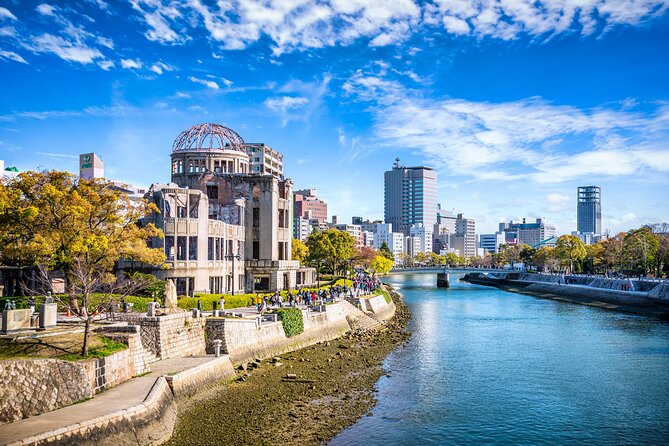
Located in Hiroshima, Japan, Peace Memorial Park stands as a symbol of hope for visitors from around the world. The park, established to commemorate the victims of the atomic bomb, serves as a reminder of the importance of peace and reconciliation. At its core, the park features the symbolic monument of the Peace Memorial Museum, which vividly portrays the devastation caused by the atomic bomb and advocates for a peaceful and hopeful future. The park’s layout includes lush gardens, tranquil ponds, and various memorials that honor the memory of those who lost their lives. Visitors can also find the Flame of Peace, which will continue to burn until all nuclear weapons are abolished worldwide.
| Symbolic Monument | Hopeful Future | Commemoration |
|---|---|---|
| Peace Memorial Museum | Advocates for peace | Honors victims |
| Flame of Peace | Nuclear disarmament | Promotes remembrance |
| Lush Gardens | Reconciliation | Encourages reflection |
Hiroshima Museum: Remembering the Past
The journey through Hiroshima’s historic sites continues at the Hiroshima Museum, a place dedicated to preserving and honoring the past. Visitors to the museum can expect to find:
- Exhibits detailing the events of the atomic bombing.
- Artifacts and personal belongings showcasing the impact on individuals.
- Testimonies and reflections from survivors.
- Educational resources on the history leading up to the tragedy.
- Interactive displays evoking the emotional impact of the devastating event.
Shukkeien Gardens: Tranquility in Nature
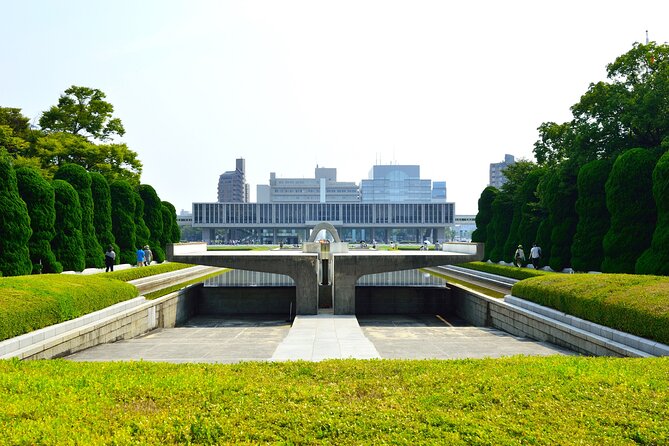
Nestled in the heart of Hiroshima, Shukkeien Gardens offer visitors a serene escape into nature’s tranquility. The garden’s tranquil beauty and traditional Japanese architecture create a peaceful oasis in the bustling city. Visitors can stroll through the meticulously landscaped gardens, featuring miniature mountains, forests, and ponds. A teahouse overlooking the central pond allows for a moment of quiet reflection while enjoying the surrounding beauty. The garden’s design, dating back to the Edo period, showcases the essence of Japanese aesthetics and landscape design principles. Shukkeien Gardens provide a perfect blend of nature and artistry, inviting visitors to experience a sense of calm and harmony in the midst of Hiroshima’s historic surroundings.
| Features | Description |
|---|---|
| Tranquil Beauty | Meticulously landscaped gardens |
| Japanese Architecture | Teahouse overlooking central pond |
Memorial Cenotaph: Honoring the Victims
Honoring the victims of the atomic bombing, the Memorial Cenotaph stands as a solemn tribute in Hiroshima.
- The Memorial Cenotaph is the central structure of the Peace Memorial Park.
- It contains the names of all the people who perished in the bombing.
- The design of the cenotaph embodies the idea of a shelter for the victims’ souls.
- Visitors often leave paper cranes and flowers as tokens of remembrance.
- The cenotaph is positioned in alignment with the Peace Flame and the A-Bomb Dome for a symbolic representation of peace and remembrance.
A-Bomb Dome Viewpoint: Reflecting on Tragedy

Positioned near the Peace Memorial Park, visitors can reflect on the tragic events of history at the A-Bomb Dome Viewpoint. The skeletal remains of the building serve as a poignant reminder of the devastation caused by the atomic bomb during World War II.
From this vantage point, one can contemplate the reflections of the past, the immense tragedy that befell Hiroshima, and the resilience of its people in the face of such adversity. The A-Bomb Dome Viewpoint offers a unique perspective on the horrors of war and the importance of striving for peace.
It provides a somber yet essential opportunity for visitors to gain a deeper understanding of the impact of nuclear weapons and the necessity of promoting a world free from such tragedies.
Peace Bell: Ringing for Global Peace
Visitors can partake in a symbolic act for global peace by ringing the Peace Bell located in Hiroshima. The Peace Bell stands as a powerful symbol of unity and global harmony, inviting individuals to reflect on the importance of peace in today’s world.
Here are five engaging aspects of the Peace Bell experience:
- The bell’s resonating sound echoes a message of hope and solidarity.
- Visitors can write wishes for peace on small paper cranes and leave them at the bell.
- Ringing the Peace Bell is a gesture of commitment to fostering understanding and compassion.
- The design of the bell incorporates elements of Japanese culture and traditions.
- The surrounding Peace Park provides a serene setting for contemplation and remembrance.
Frequently Asked Questions
Is Transportation Included in the Tour Package or Do Participants Need to Arrange Their Own Way to the Meeting Point at Hiroshima Castle?
Transportation options vary; participants arrange their own way to Hiroshima Castle meeting point. Tour package does not include transport. Visitors can opt for public transport or taxi. Meeting point is outside Hiroshima Castle, with Peace Memorial Park as the endpoint.
Are There Any Specific Restrictions or Guidelines for Visitors at the Peace Memorial Park, Such as Dress Code or Behavior Etiquette?
Visitors at Peace Memorial Park in Hiroshima should adhere to respectful behavior etiquette. While no strict dress code is enforced, dressing modestly is appreciated. Proper behavior, including quiet reflection and no littering, is encouraged.
Can Participants Choose to Skip Certain Attractions on the Tour, or Is the Itinerary Fixed and Mandatory for All Attendees?
Participants can customize their experience with flexibility options on the tour. They are allowed to skip attractions based on personal preferences. The itinerary is not mandatory, offering visitors the freedom to tailor their journey through Hiroshima’s historic sites.
Are Meals or Refreshments Provided During the Tour, or Should Participants Bring Their Own Snacks and Drinks?
During the tour, meal options aren’t provided, but participants can find snack availability. It’s recommended to bring snacks and drinks for personal convenience. The focus is on the historical sites, with participants responsible for their own refreshments.
How Much Time Is Allocated for Each Stop on the Tour, and Is There Flexibility for Extra Exploration or Extended Breaks at Certain Locations?
During the tour, participants have time flexibility at each stop, allowing for extended breaks and additional exploration. The itinerary is structured but offers opportunities for extra stops or longer stays at specific locations based on group preferences.
Recap
To sum it up, the ‘Hiroshima’s Historic Walk’ tour offers a poignant journey through the city’s past, highlighting its iconic landmarks and providing a deeper understanding of its enduring legacy.
With a knowledgeable guide leading the way, visitors are immersed in Hiroshima’s rich history and are given the opportunity to reflect on the tragedy of the atomic bomb.
This tour promises a moving and enlightening experience for all travelers seeking to learn more about this significant chapter in history.

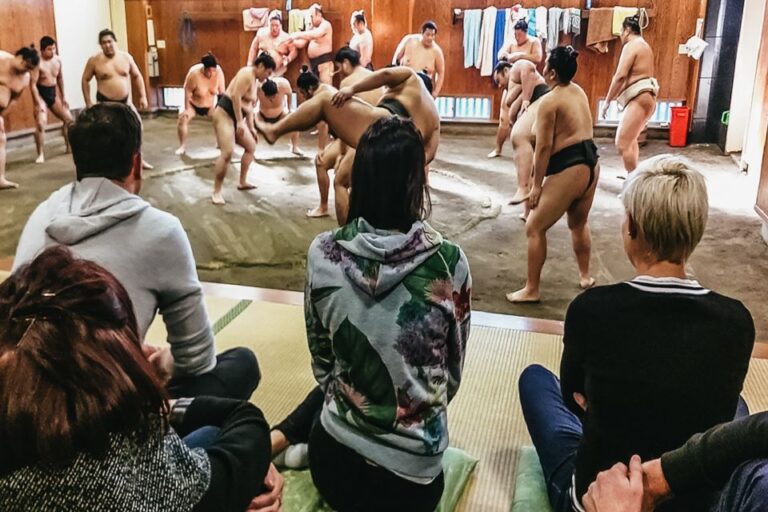


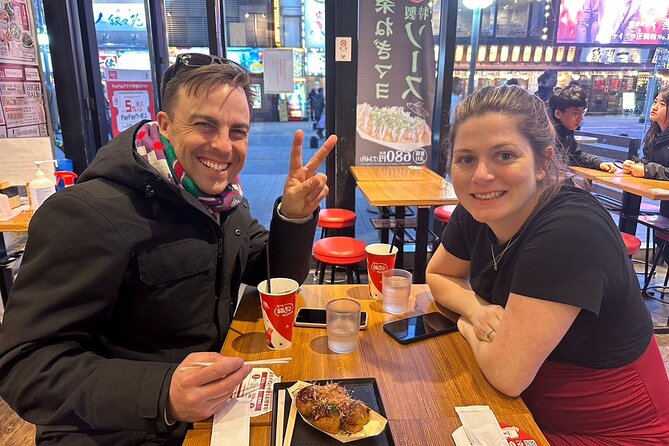
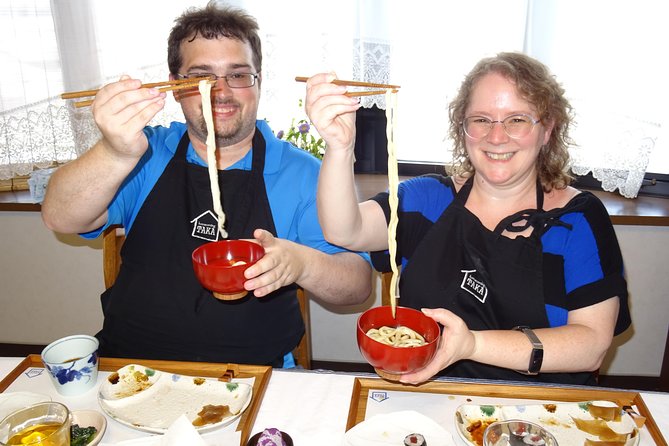
![Traditional and Ordinary Japanese Udon Cooking Class in Asakusa, Tokyo [The Only Udon Artist in the World Teaches]](https://tokyoezine.com/wp-content/uploads/1_traditional-and-ordinary-japanese-udon-cooking-class-in-asakusa-tokyo-the-only-udon-artist-in-the-world-teaches.jpg)